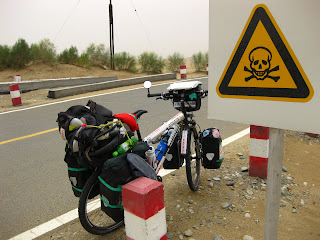For 4 min 45 seconds of film, this is about all the inspiration I needed to get out (tomorrow) and ride another 150K for the weekend. Chris Akrigg of Mongoose demonstrates the finer lines of mountain biking control. Obviously, the mountain bike is designed to perform in all road conditions, there are distinctions though, let's have a look in each category. This is an incredible video, glad to share it here too.
What are some popular styles of Mountain Biking?
(XC) Cross-Country: is the most popular style of mountain biking. Cross-country trails consist of a mix of rough forest paths (tree roots and rocks exposed) and narrow mountain trails that are ideal for this type of riding that are known as 'single track'. In other areas between forested areas, there are also fire roads (gravel roads in timber areas or through protected national forests), and even paved paths connecting other trails. Riding or racing is also only deemed cross-country if the technical complexity of the trails is easy or moderate. Trails nearly impossible even to experienced riders are more often dubbed "all-mountain", "freeride", or "downhill".
(DH) Downhill: is a gravity-assisted time trial mountain biking event. Riders race against the clock, usually starting at intervals of 30 seconds (seeded from slowest to fastest), on courses which typically take two to five minutes to complete. Riders come from all around the world.
Freeride: is closely related to downhill cycling and dirt jumping focused on tricks, style, and technical trail features. It is now recognized as one of the most popular disciplines within mountain biking. Freeride bicycles tend to have shorter wheel bases, and lighter components than Downhill bikes.
(AM) All mountain: these full-suspension mountain bikes are crossed between Freeride and XC. These bikes have long-travel dual-suspension and are suited for big mountain terrain. The frames are made from aluminum, carbon, and dual composite builds. Take this simple example: a 2008 Gary Fisher HiFi Deluxe. This model was built with Bontrager Race Disc wheelsets and handlebars (by the Trek company). The traditional double-walled rims are ultra-durable and featured SUP-tubeless ready applications. The standard rims on most mountain bikes in this category are 26" and feature 6-bolt hubs to mount 185mm front and 160mm rear disk rotors powered by Avid Juicy Five hydraulic brakes. The crankset is the standard Shimano Deore LX, and drive train is complimented with SRAM X7 rapid-fire shifters, SRAM X9 rear derailer and Shimano LX front derailer using a 9-speed chain. These mountain bikes have 27 external gears, while newer models have switched to 2X10 (2 gears up front, 10 gear cassette in the rear). Popular components are now the 2011 Shimano Deore SLX, XT and ultralight (and expensive) Shimano XTR models. SRAM produces similar component groups like the X7, X9, X.O, or ultralight X.X. components and these shifters are designed to work with complimenting SRAM rear-deraillers only. Depending on your bike and model and price, these components will be available to you to choose from.
An introduction to types of Mountain Bikes. Thanks for visiting. Good luck, enjoy the rides!
















No comments:
Post a Comment